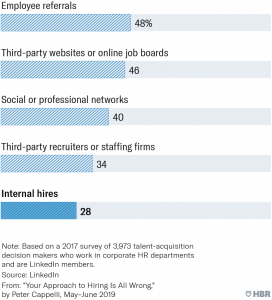The lack of attention to user needs will eventually manifest as a bottom-up revolt and when those users become decision-makers, it will negatively impact the business.
When it comes to the future of B2B and CX, a trend for 2020 is coming into focus, and it’s not looking good.
Looking back, Forrester’s Predictions 2018 considered 2018 a “year of reckoning” for digital transformation. This was to be the tipping point when inaction on transformation would start putting firms at risk. One of the surprising insights was that this risk wasn’t necessarily from an inability to attract new customers. It was from churn – from existing customers leaving for better experiences.
Skip forward a year to the 2019 edition, and Forrester is telling a similar, slightly tweaked story: 2019 is the year digital transformation “goes pragmatic.” If 2018 was all about recognizing the risks of failing to digitally transform, 2019 has been about mitigating those risks by putting plans into action.
These trends will have major implications in 2020. For firms that are trailing behind on CX, going pragmatic seems like a no-brainer. But how does the customer fit into this approach? Not very well, unfortunately. The same report states that 20 percent of brands will abandon their customer experience initiatives in 2019, opting for more traditional strategies, like price reductions, to achieve short-term objectives.
As marketers, we’re obsessed with the pain points customers face making their purchasing decisions. However, in our drive to reduce friction in that buyer’s journey, it’s easy to lose sight of the post-purchase experience. Like the CEOs, CIOs, and CMOs turning to pragmatic pre-purchase strategies to capture market share, transformation of the actual product or service experience becomes an afterthought.
Unsurprisingly, these risks are not a B2C-only concern. A 2019 Episerver survey revealed that nine out of ten B2B decision-makers identify increasing digital expectations from their customers or partners as their top external threat. Even worse, 50 percent of those same decision-makers say they lack funding to execute digital transformation programs in their organizations, echoing the Forrester predictions that more pragmatic tactics such as price will be the go-to strategy to spur growth.
What gets lost in this reactive mindset is the key to keeping (and expanding) market share: existing customers.
In B2B, where purchases are both complicated and time-consuming, this post-purchase customer service landscape can be particularly barren. End-users often have their product and/or service decisions made for them by senior managers, and the customer experience itself often reflects that power imbalance. This isn’t an unknown, of course. But if everyone agrees it’s is an issue, why isn’t it a priority? Currently, 59 percent of B2Bs point to legacy or in-house software as the primary reason for not being more digitally agile. That, combined with the lack of capital expenditure, maps out a grim path to declining customer loyalty.
Expensive and complicated purchasing decisions, typically made by senior managers, leave the end-user out of the equation, which in turn means that a user’s only interaction with a brand may be in the vacuum of the post-purchase experience. For many organizations, the product and/or service experience is the brand. And if the experience is poor, the brand perception will follow suit, no matter how low the purchase price might have been.
Perhaps the subconscious hope is that users will relent to a sort of digital Stockholm syndrome, where they develop an alliance with the tools they’re forced to use. More likely, though, the lack of attention to user needs will manifest as a bottom-up revolt, cultivating resentment and ill-will toward the brand responsible for their ongoing poor experience. And when those users become decision-makers, it’s not a leap to see how this can negatively impact business relationships and long-term profitability.
Clinical research has shown that emotions impact logical reasoning. And reasoning suffers the most when emotions are negative. At its base, a brand relationship is an emotional one, formed – and continuously informed – by the customer experience. When that experience is negative, it clouds every aspect of decision-making. Your product and/or service will look unappealing no matter how compelling its feature set or stated benefits.
So, B2B brands have a choice to make: Focus on the short-term gains that traditional price and features may garner, or invest in the long term, creating emotional engagement through meaningful brand interactions that speak to the needs of not only the purchasing decision-makers but also the end-users. Because the latter won’t always be just users—one day they’ll make the decisions.
And with 2020 on the horizon, here’s where B2B companies can take another lesson from B2C: An emotional connection is much stronger than a pragmatic one.
Opinions expressed in this article are those of the guest author and not necessarily Marketing Land. Staff authors are listed here.
Marketing Land – Internet Marketing News, Strategies & Tips
(78)
Report Post






